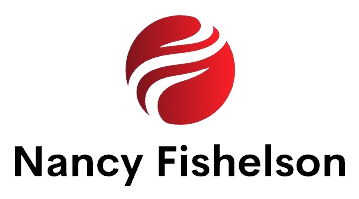Introduction
Marketing Automation Vs E-Mail Marketing: In the fast-evolving world of digital marketing, professionals often encounter two terms that are mistakenly used interchangeably marketing automation and email marketing. While both tactics revolve around reaching audiences through email communication, they are fundamentally different in scope, functionality, and effectiveness. Understanding the unique value each one brings to the table is vital for crafting successful marketing campaigns that align with business objectives and customer journeys. In this detailed guide, we’ll dissect the key differences, applications, advantages, and limitations of marketing automation and email marketing. By the end of this article, you’ll have a clear understanding of which strategy suits your brand best and how to integrate them for optimum results.

Defining E-Mail Marketing In The Digital Age
Email marketing is the practice of sending targeted messages to a list of subscribers with the aim of informing, engaging, or converting them. It is one of the earliest forms of digital marketing and remains widely used due to its cost-efficiency and direct communication style. Email marketing operates mainly through campaign blasts, newsletters, promotional offers, and announcements. The central idea is to craft an email, design a subject line, and hit send to a selected segment of subscribers. The sophistication of email campaigns has certainly evolved with A/B testing, personalization, and audience segmentation, yet it still relies heavily on manual input and oversight.
The foundation of email marketing lies in crafting compelling content and sending it to an opt-in list. Whether you’re launching a product, offering discounts, or nurturing leads with periodic updates, email marketing helps maintain a direct line with your customers. What differentiates it from automation is its linear nature. Each email is sent based on a predefined schedule or trigger but doesn’t necessarily integrate into a larger ecosystem of customer behavior tracking or dynamic content generation. Thus, while email marketing is highly effective for broadcasting messages and increasing brand awareness, it remains a standalone tactic within a broader marketing strategy.
What Is Marketing Automation?
Marketing automation is a holistic approach that uses technology to streamline, automate, and measure marketing tasks and workflows. It encompasses a range of tools and platforms that integrate various channels—email, social media, websites, customer relationship management (CRM), and more—to nurture leads and personalize user experiences based on their behaviors and preferences. Marketing automation enables marketers to design workflows that automatically respond to customer interactions. For example, when a user downloads an eBook, they can be added to a nurture stream that sends them a series of emails, product recommendations, and follow-up calls based on their interests.
The beauty of marketing automation lies in its ability to handle complex, multi-stage campaigns with minimal manual intervention. By leveraging data such as browsing behavior, previous purchases, or engagement history, automation tools deliver highly relevant content at just the right moment. Unlike traditional email marketing, which sends the same message to a large group, marketing automation ensures that each customer receives a tailored message based on where they are in the buying journey. This makes it an essential tool for businesses looking to build scalable, personalized, and data-driven campaigns that result in higher engagement and conversion rates.
The Core Differences Between The Two Approaches
Though email marketing and marketing automation both involve sending messages to customers, the difference lies in how these messages are triggered and what happens after they are sent. Email marketing typically follows a static approach. A message is designed, scheduled, and delivered to a targeted list. Its performance is often measured in terms of open rates, click-through rates, and unsubscribes. In contrast, marketing automation creates dynamic communication sequences that respond to user actions, track behavior across touchpoints, and allow for multichannel messaging. It is more of a customer journey builder than a single-message dispatcher.
Another major distinction lies in integration. Email marketing tools are generally standalone solutions, while marketing automation platforms integrate seamlessly with CRM systems, sales tools, and data analytics dashboards. This integration allows for more accurate segmentation, better lead scoring, and more personalized interactions. Moreover, marketing automation platforms often support multichannel execution, meaning that customer touchpoints can extend beyond email to include SMS, social media, and in-app messaging. Email marketing, by comparison, is limited to the email channel alone, making it less versatile in campaigns that demand omnichannel engagement.
Use Cases That Highlight The Strengths Of Each
To truly understand the difference between marketing automation vs email marketing, one must look at practical use cases. Email marketing shines in scenarios where a business needs to announce a flash sale, send a company newsletter, or deliver a simple welcome message. It’s effective for small to medium-sized businesses that need to stay in touch with their audience without the complexity of behavioral tracking or dynamic content. On the other hand, marketing automation is best suited for lead nurturing, onboarding sequences, customer retention programs, and re-engagement campaigns. For example, a customer who abandons their cart can automatically receive a series of personalized reminders through automation, increasing the chance of conversion.
Another scenario where marketing automation wins is in B2B lead generation. Prospective clients often require multiple touchpoints before making a decision. Marketing automation systems can segment leads based on engagement level and industry, nurture them with tailored content, and notify sales teams when a lead is warm enough for outreach. This kind of orchestrated effort is difficult to achieve with email marketing alone, which lacks the workflow logic and data intelligence of automation platforms.
Cost Implications And ROI Considerations
From a budgeting perspective, email marketing solutions are often more affordable and easier to implement, making them a popular choice for startups and small businesses. They usually come with straightforward pricing models based on the number of subscribers or emails sent. However, the ROI is limited to how well a single campaign performs. If a campaign fails, the business has to manually analyze the outcome and modify future communications accordingly. In contrast, marketing automation involves a higher initial investment but yields long-term ROI through efficiency gains, better targeting, and increased conversion rates.
Businesses should evaluate cost not just in terms of platform fees, but also in terms of time savings, labor costs, and customer retention. While the setup of an automation platform can be resource-intensive, it drastically reduces the need for repetitive tasks and enables scalability. It allows marketing teams to do more with fewer resources, which ultimately improves ROI. Also, marketing automation’s ability to deliver real-time analytics ensures that businesses can make data-backed decisions on the fly, reducing wasted spend on underperforming campaigns.

Personalization And Customer Experience
One of the most crucial components of modern marketing is personalization. Consumers expect brands to understand their needs and preferences, and both email marketing and marketing automation offer tools to meet these expectations. Email marketing allows for basic personalization such as including a recipient’s name or referencing past purchases. However, this is often superficial and doesn’t adapt based on user behavior or journey stage. Marketing automation, by contrast, takes personalization to the next level. It enables businesses to send dynamic content based on real-time user interactions, past behaviors, and predictive analytics.
For example, with automation, an ecommerce platform can recommend products based on browsing history, tailor email frequency based on engagement patterns, and automatically pause communications if a customer stops interacting. This kind of intelligent personalization enhances the customer experience, builds brand loyalty, and drives higher lifetime value. In today’s competitive digital landscape, such advanced capabilities give businesses a significant edge over those relying solely on email marketing.
Analytics And Performance Tracking
Measuring performance is key to improving any marketing strategy. Email marketing platforms provide insights like open rates, click rates, bounce rates, and unsubscribes. While these metrics are useful, they offer only a narrow view of campaign effectiveness. They don’t track what users do after clicking a link or whether the message moved the needle toward conversion. Marketing automation platforms, on the other hand, offer robust analytics that cover the entire customer journey. They can track website visits, page views, time spent on content, lead scores, conversion attribution, and even sales pipeline impact.
This level of insight enables marketers to optimize their campaigns in real time and understand which touchpoints are most effective. It allows for better A/B testing, enhanced customer segmentation, and informed budget allocation. For businesses looking to tie marketing activity directly to revenue, marketing automation offers the clarity and depth of reporting that email marketing alone cannot provide.
Scalability And Long-Term Strategy
Scalability is another critical factor in choosing between marketing automation and email marketing. As your customer base grows, so do your communication needs. Email marketing platforms may struggle to keep up with increasing segmentation and content demands, often requiring manual adjustments and duplicated efforts. Marketing automation, however, is designed to scale. Once the workflows are built, they can run autonomously, handling thousands of leads simultaneously with personalized messaging at every step.
From onboarding new customers to reactivating dormant ones, automation ensures that every interaction feels timely and relevant, regardless of scale. It also supports long-term marketing strategies such as lead nurturing funnels, loyalty programs, and post-purchase journeys. These are critical for businesses looking to maintain engagement and maximize lifetime customer value. Marketing automation is not just a tool—it’s a strategic investment that aligns marketing efforts with long-term growth.
Which One Should You Choose?
The choice between marketing automation and email marketing depends largely on your business goals, resources, and customer base. If your primary objective is to communicate simple messages to a large audience and you have limited budget or technical know-how, email marketing is a strong starting point. It’s accessible, effective, and relatively easy to manage. However, if your aim is to build deeper relationships, automate workflows, and create multi-touchpoint campaigns that evolve with user behavior, marketing automation is the better solution.
Many businesses find value in combining both. Email marketing tools can handle top-of-funnel awareness campaigns, while automation takes over as leads progress through the funnel. Integrating the two allows for a balanced approach that leverages the strengths of each strategy. Ultimately, the goal is not to choose one over the other, but to understand how each can complement your overall marketing framework and contribute to your business objectives.
The Future Of Marketing Automation Vs E-Mail Marketing: Integration And Intelligence
Looking ahead, the future of digital marketing lies in integration, personalization, and data intelligence. Customers expect seamless experiences across channels and devices. This expectation makes marketing automation increasingly essential for brands that want to stay competitive. Emerging technologies like AI, machine learning, and predictive analytics are already being integrated into automation platforms to enhance targeting and messaging further.
Meanwhile, email marketing will continue to play a foundational role in digital communication. Its simplicity and directness make it a staple for brand engagement. However, its capabilities will be expanded through integrations with other platforms and smarter content delivery. As customer expectations grow, the line between email marketing and marketing automation will continue to blur. Businesses that understand this and adopt a hybrid, flexible approach will be better positioned to adapt to changes and meet evolving customer demands.

Conclusion
In the evolving world of digital outreach, understanding the distinction between marketing automation and email marketing is critical to executing effective and scalable strategies. While email marketing offers a straightforward and affordable way to maintain communication with your audience, its limitations become more apparent as your business grows and consumer expectations rise.
Marketing automation, with its ability to track behavior, trigger responses in real-time, and integrate across channels, provides a more comprehensive and personalized customer experience. However, this power comes with a steeper learning curve and higher investment. Ultimately, the decision between marketing automation vs email marketing is not about choosing one over the other, but rather identifying how both can work together to support different stages of the customer journey. Whether you’re nurturing leads, building loyalty, or driving conversions, aligning your tools with your goals ensures that your marketing remains efficient, responsive, and impactful.










